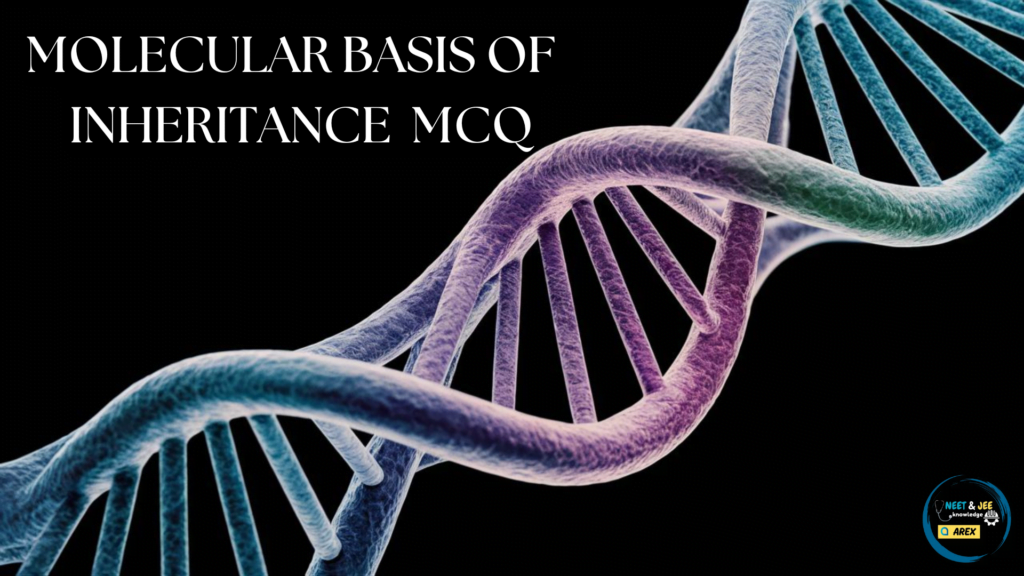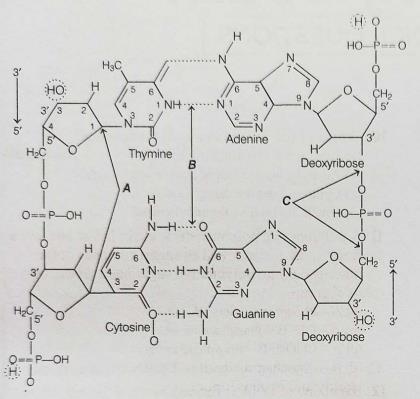
Molecular Basis of Inheritance Biology MCQ for NEET
The molecular basis of inheritance explains how genetic information is passed from one generation to the next. DNA (deoxyribonucleic acid) is the molecule that carries genetic instructions. It is composed of two strands forming a double helix. Each strand is made up of nucleotides, which include a sugar, a phosphate group and a nitrogenous base. There are four nitrogenous bases in DNA: adenine (A), thymine (T), cytosine (C) and guanine (G).
DNA replication is an important process where the DNA makes an exact copy of itself. During replication, the double helix unwinds and each strand serves as a template for the formation of a new complementary strand. Enzymes like DNA polymerase play a vital role in adding nucleotides to form the new strand. The accurate copying of DNA is essential for the transmission of genetic information.
| NEET 2025 Exam Important Links | |
|---|---|
| NEET 2025 Updated Syllabus | NEET Eligibility Criteria 2025 |
| Biology Preparation | Chemistry NEET Preparation |
| NEET Preparation tips for 2025 | NEET Result 2024 |
Molecular Basis of Inheritance Biology MCQ for NEET
The “Molecular Basis of Inheritance” is an important topic in the NEET syllabus as it lays the foundation for understanding how genetic information is transferred from one generation to the next. This topic covers the structure and function of DNA, the molecule responsible for heredity.
Grasping the molecular basis of inheritance helps NEET students understand genetic disorders, genetic engineering and the principles of heredity and variation. These concepts are critical for future medical professionals, as they form the basis for diagnosing genetic diseases, developing gene therapies and understanding the genetic basis of many conditions.
Molecular Basis of Inheritance Biology MCQs
If ribose sugar is present then it is called nucleoside and when deoxyribose sugar is present then it is called deoxynucleoside, i.e. adenoside (sugar is ribose), deoxyadenoside (sugar is deoxyribose), cytidine, deoxycytidine, uridine or deoxythymine.
Adenine, cytidine, thymidine are nucleosides.
Uracil, cytosine and adenosine are nitrogenous bases.
\( \quad\)\( \quad\)

Enhance your preparation with Arexiq’s Mock Test Series where we provide solutions to various MCQs like we provide in this post “Molecular Basis of Inheritance NEET MCQ”. Our expert teachers explain the concepts thoroughly, making it easy for you to understand. We offer many types of questions ensuring a clear grasp of concepts.
FAQs
1.What is the molecular basis of inheritance?
Answer. The molecular basis of inheritance refers to the mechanisms by which genetic information is stored, copied, and passed from one generation to the next, primarily involving DNA.
2. What is DNA?
Answer. DNA (deoxyribonucleic acid) is the molecule that carries genetic information in living organisms. It consists of two strands forming a double helix, made up of nucleotides.
3. What are the nitrogenous bases in DNA?
Answer. The nitrogenous bases in DNA are adenine (A), thymine (T), cytosine (C), and guanine (G).
4. What is the role of DNA polymerase?
Answer. DNA polymerase is an enzyme that adds nucleotides to form a new complementary strand during DNA replication.
5. What processes are involved in the molecular basis of inheritance?
Answer. The key processes are DNA replication, transcription (copying DNA to RNA) and translation (producing proteins from RNA).


